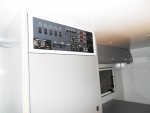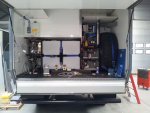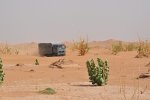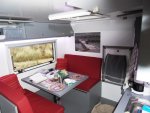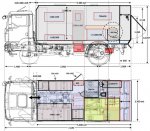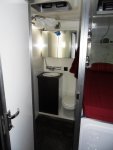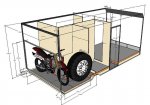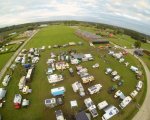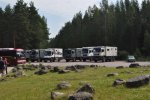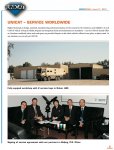Hi
Campo,
Excellent, systematic beginning. Some points in response:
*************************************
Do you agree with this parameters as presented and are they +/- real world travelers life ?
A. It's hard to define what a
"real world traveler" is like. Most people begin their travels by exploring in ever-larger concentric circles from where they first started. This is also true of overlanders.
So I suspect that most Americans overlanders start with Latin American adventures, and they only begin overlanding in Africa or Asia
after they've seen most of Latin America. Whereas European overlanders usually begin with either African "Cape to Cairo" adventures, or they begin with Eurasian "Silk Road" adventures, Istanbul to Beijing. And only later do they see Latin America.
As such, I suspect that Tibetan altitude and Siberian temperatures are more of a concern for European overlanders, than they are for American overlanders. For most American overlanders, Tibet is a place that is very, very far away, both physically and psychologically. So Tibetan altitude is probably not a major design concern for most American overlanders. Whereas Tibetan altitude is a major design concern for me, perhaps because I am European? And perhaps because I've already spent considerable time in Tibet and Nepal?
However: A globally capable motorhome of the kind that I am imagining should be able to handle every continent except Antarctica. Sure, a custom-built motorhome can be tailored to meet the exact needs and stated geographic destinations of a single client. But a more "standardized" sort of globally capable motorhome, produced in limited production runs, and designed to "go anywhere", needs to factor in multiple possibilities on all continents except Antarctica.
*************************************
The idea is that a hard working couple takes a year of to travel around the world.
B. Personally speaking, I see myself as designing a RTW (round-the-world) motorhome for a couple that is full-timing for
longer than a year. I am imagining them as a couple who are wealthy, but who retire early, in their early 60's. So their expedition motorhome needs to be designed for at least 5 years of comfortable traveling....

Peter Thompson, who built
Mañana, a fully integrated expedition motorhome intended for traveling the "bad roads" of Australia, spent 11 years on the road with his wife in
Mañana -- see
http://www.thompsons.au.com/motorhome/ , and see the discussion at post #212, #214, and #215, at
http://www.expeditionportal.com/for...pedition-RV-w-Rigid-Torsion-Free-Frame/page22 .
*************************************
What is the outside temperature in winter times?
But we calculate as extreme with -30°C (-22°F) . If more heat power is available no problem.
The normal cold winter conditions will be like -10°C (+14°F)
AND 70 % of the time the heaters will have to work at ambient +5°C(+32°F)
Inside calculation temperature is chosen +22°C (+72°F)
We would like the system to cover all the range above mentioned.
Summer temperatures (same idea)
Extreme outside +45°C (113°F) cool down to interior +28°C (82°F)
Summer warm +28°C (82°F) cool down the interior to +24°C (75°F)
This last one is what the AC system will have to deliver in 70% of the time that it is wanted to function.
Let us now make the calorific calculations to determine the heater capacities.
C. I wonder a bit about your figures for "extreme cold" temperatures......

I grew up partly in Canada, and so I know just how cold a northern continental climate can become in the winter. In general most Europeans do not seem to "understand" extreme cold to the same extent that Canadians do. For instance, in Manitoba and Saskatchewan, the temperature can stay below
−18 °C (0 °F) for weeks at a time without a break. And in Alberta, extreme temperatures as cold as −54 °C (−65 °F) are possible. − 30 °C is not considered "extreme".
Siberia is even colder: Siberia is the coldest place on earth outside Antarctica.
Average winter temperatures in Yakutsk, Siberia, are
−39 °C (− 38 °F) , and average winter temperatures in Verhojansk are − 44 °C (− 47 °F) -- see http://traveltips.usatoday.com/climate-siberia-russia-63599.html .
− 32 °C is considered a "mild" temperature in Siberia during the winter, not average, and certainly not extreme -- see http://www.bbc.co.uk/news/world-11875131 . In the article just linked, a miserable BBC correspondent traveling around Siberia during the winter at one point experienced a temperature of
− 53 °C . Temperatures this low are almost inconceivable for most people. Except, that is, for Russians, Canadians, and Americans who work either in central Alaska or Antarctica.....:sombrero:
For an excellent YouTube playlist of videos that depict what winter is like in Yakutia, Siberia, see
http://www.youtube.com/playlist?list=PLAA9891A535992FCE .
Furthermore, temperatures on the Tibetan plateau in the winter can drop as
low as −40 °C (−40 °F).
So personally speaking, I see myself designing an RTW motorhome that can handle −40 °C (−40 °F) for many weeks, and extreme temperatures as low as − 55 °C (−67 °F) on occasion. Or perhaps even as low as − 60 °C (− 76 °F). The lowest temperature ever recorded in Siberia was -68° Celsius (-90° Fahrenheit ) -- see http://geography.about.com/library/faq/blqzsiberiacold.htm .
Now here's the thing: many parts of northern Canada and Siberia are actually more accessible in the winter-time, not less. During the summer months many Siberian "roads" turn into impassable muck. During the summer months many communities in Siberia become isolated islands, and travel between them is usually by helicopter. Whereas in the winter everything freezes over, and communities are better connected by the winter system of "ice roads".
The most famous "ice road" in Siberia is the M56 Kolyma Highway that connects Yakutsk with Magada, otherwise known as the "Road of Bones" -- see http://en.wikipedia.org/wiki/M56_Kolyma_Highway ,
http://download.eyakutia.com/pdf/temp/kolymahighway_travelmap.pdf ,
http://www.cbc.ca/news/canada/north...it-s-like-a-way-of-life-says-writer-1.2515737 ,
http://basementgeographer.com/road-of-bones-the-kolyma-highway/ ,
http://askyakutia.com/tag/road-of-bones/ ,
http://askyakutia.com/tag/kolyma-highway/ ,
http://askyakutia.com/2013/09/first...iberia-russia-middle-october-photos-pictures/ ,
http://askyakutia.com/2013/12/truck...ads-in-yakutsk-yakutia-siberia-russia-photos/ , and
http://www.explorersweb.com/polar/news.php?url=on-the-siberias-road-of-bones-you-travel_137692557 :

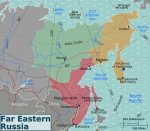
[video=youtube;2z7OYo9PxA8]http://www.youtube.com/watch?v=2z7OYo9PxA8 [/video]
[video=youtube;GQowTCgd8d8]http://www.youtube.com/watch?v=GQowTCgd8d8&index=58&list=PLAA9891A535992F CE [/video]
Apparently the Russian government now maintains the
Road of Bones year round, but it's the only all-weather road in the area. All of the other roads function only during the winter, because many of them cross rivers that (it is assumed) will be covered with thick ice in the winter. In the summer the same rivers become impassable, and they are not crossed by bridges.
So put it this way: either one's expedition motorhome is designed to handle extreme Siberian cold, or there will be lots of places in Siberia where one's expedition motorhome will simply never go.
For first-hand information about what it's like to travel with an expedition motorhome in Siberia, by an American couple who travelled the
Road of Bones in a Truck-Camper in the middle of winter, see
http://turtleexpedition.com/vehicles/turtle-iv/ ,
http://turtleexpedition.com/adventures/russia/introduction-2/ ,
http://turtleexpedition.com/adventures/russia/russia-update-1/ ,
http://turtleexpedition.com/adventures/russia/russia-update-2/ ,
http://turtleexpedition.com/adventures/russia/russia-update-3/ ,
http://turtleexpedition.com/adventures/russia/russia-update-4/ ,
http://turtleexpedition.com/adventures/russia/russia-update-5/ , and
http://turtleexpedition.com/adventures/russia/russia-update-6/ .
As for summer heating, that's another matter. I haven't researched summer temperatures in the Sahara yet, so I can't comment on that.
*************************************
The global insulation is 40mm sidewalls and 60mm roof and floor.
D. I also wonder about the thickness of the walls that you've specified. The Mongolian Zetroses described at the beginning of this thread were designed for Ulan-Bator's Sub-Arctic climate, and have 5 cm thick walls, and 10 cm thick floors and ceilings -- see
http://www.examiner.com/article/h-nerkopf-neukirchen-sends-two-zetros-expedition-rv-s-to-mongolia , and see posts #9 to #13 at
http://www.expeditionportal.com/for...el-in-Extreme-Cold-amp-at-High-Altitude/page1 and
http://www.expeditionportal.com/for...el-in-Extreme-Cold-amp-at-High-Altitude/page2 .
Most UniCats also seem to have walls 6 cm thick. On Unicat's website, the wall-thickness and insulation rating of most vehicles usually reads as follows:
- Wall thickness 60 mm (2.36") with polyurethane foam insulation, 3 mm (0.12") FRP outer surface, 2 mm (0.08") FRP inner surface, insulation rating 0.44 W/m[SUP]2[/SUP] K (0.078 Btu/ft[SUP]2[/SUP] hr °F)
See
http://www.unicat.com/en/individual.php , and see for instance
http://www.unicat.com/en/info/MD83h-MANTGS6x6.php ,
http://www.unicat.com/en/info/MD58hvfamily-MBZetros18334x4.php , and
http://www.unicat.com/en/info/EX46-MANM4x4.php.
*************************************
These are only questions, not criticisms. For instance, I was merely wondering whether 4 cm thick walls will prove compatible with one of your stated goals, namely,
"crossing through Siberia in winter". Do you think 4 cm thick walls will be thick enough to handle Siberian winter temperatures, as described above?
And if so, why?
But again, many thanks for this very clear statement of design parameters.
All best wishes,
Biotect


